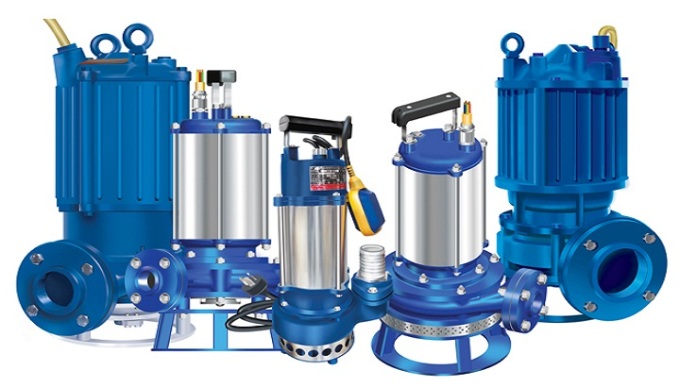How the India Out of Home (OOH) Advertising Market Is Positioned?
India OOH advertising industry has transcended the traditional media options and consumers are being communicated at every touch point possible. OOH advertising in India is no more restricted to billboards, the new media options like street furniture, transit media, mall kiosks, and digital media have come up presenting advertisers with a variety of options to choose from. This had led the sector to register CAGR of ~% in FY’2011-FY’2016. The revenue increased from INR ~ billion in FY’2011 to INR ~ billion in FY’2016. Market was mainly driven by improvement of technologies in transit media advertising and airport advertising which are high traffic volume areas with potential consumers.

Demand from Ecommerce companies and banking sector, government also became the major contributor to the OOH advertising industry. Significant improvement was registered in mass transit OOH advertising which further helped in boosting the revenue during the period. Growth was mainly led by increased demand from new and emerging companies with dominant share being captured by physical OOH advertising.
India Physical OOH Advertising Market
Market Size for India Physical OOH Advertising Market
Physical OOH advertising consists of traditional and new methods of OOH advertising in which the display is static. These mainly include billboards, unipoles, gantries, standees, building and train wraps street furniture and others. Market for physical OOH had been registering positive growth in terms of revenue since FY’2011 with an estimated growth from INR ~ billion in FY’2011 to INR ~ billion in FY’2016. Advent of 3G services in India, introduction of global e-commerce companies in India, price war between ecommerce companies in India, assembly and general elections, launch of key government schemes such as Jandhan and Swachh Bharat Abhiyaan led to growth in demand for physical OOH advertising in India. Price of the physical OOH advertising is variable and is dependent on location and type of consumers thronging the area.
Market Segmentation
The market segment for physical OOH was largely dominated by billboards commanding an estimated ~% market share. Transit media has seen significant rise in demand leading its market share in Physical OOH advertising increasing from ~% in FY’2011 to ~% in FY’2016. Gantries and other segments such as street furniture, standees constituted ~% In terms of location roadside environment dominated the market with ~% market share followed by transit media, street furniture and others.
Physical OOH Market Trends in India
There is increased focus to improve the transport and other related infrastructure to satisfy the needs of rising population in urban locations. These structures face the huge traffic volume and are very attractive source for state and municipalities to earn revenue by leasing these spaces for OOH advertising. Implementation new regulations regarding outdoor advertising is expected to help in curbing illegal hoardings and promote the use of these public spaces for advertisement. With the passage of time and advent of many technologies OOH advertising has developed in leaps and bounds.
India Digital OOH Market In India
Market Size for India Digital OOH Advertising Market
Digital advertising in India had risen significantly during the analysis period (FY’2011-FY’2016) registering CAGR of ~%. Revenue generation from advertising on Digital OOH platform had risen from INR ~ million in FY’2011 to INR ~ million in FY’2016. Growth was maximum in FY’2015 as general election was held in India and digital advertising was used extensively to reach the audience. Continuous improvement infrastructure is the very important factor promoting the use digital OOH medium to reach the audience. These have become significant source for target advertising at major locations like metros and airports, malls and shopping complexes generating revenue for companies. Metro cities remain the major growth driver for demand of digital OOH medium for advertisements. Integration of digital content with OOH is leading to location based customization of advertisements.
Market Segmentation
Transit media continues to remain the dominant player in digital OOH market advertising. Market share declined during analysis period but there had been significant increase in revenue. The market share for the digital OOH advertisement on street furniture has increased from~% in FY’2011 to ~% in FY’2016. Other sector which showed significant growth include hospitality centers, health and personality, cinemas, retail outlets and other location of public access. Video ads remain a dominant player in digital out of home advertising with staggering market share of ~% in FY’2016. Revenue from image ads had decreased from INR ~ million in FY’2011 to INR ~million in FY’2016. Wrap around had its market share declined from ~% to ~% during the same period due to rise in market share of video ads.
Companies Cited in the Report
List of Companies Companies Covered in the
Report
Report
Times OOH, TDI, Pioneer Publicity, Laqshya Media,
JC Decaux, EG Communications, Bright Outdoor Media, Traditional Asset Owners
Global Advertisers Alakh Advertising & Publicity,
Jagran Engage, Noida Publicity, Icons,
Signpost India Pvt. Ltd. JCDecaux, Explomedia,
Group AAO, Roshan Publicity, Prakash Publicity Service
JC Decaux, EG Communications, Bright Outdoor Media, Traditional Asset Owners
Global Advertisers Alakh Advertising & Publicity,
Jagran Engage, Noida Publicity, Icons,
Signpost India Pvt. Ltd. JCDecaux, Explomedia,
Group AAO, Roshan Publicity, Prakash Publicity Service
S&O Investments, Group AAO, Brite Advertising,
Lead Advertisers, Aspek Media, The Social Street, Mall Asset Owners
Adwel Advertising, Mohan Media, Mediashop
Lead Advertisers, Aspek Media, The Social Street, Mall Asset Owners
Adwel Advertising, Mohan Media, Mediashop
Times OOH Media, Laqshya Media, JCDecaux Airport Asset Owners
CASHurDRIVE, Fast Track Cabs, My Cab, BCabs Cab Asset Owners
Atibn OOH, Spice Jet, Blue Mushroom Infozone, Inflight Asset Owners
Air Asia, Jet Airways, Live Media
Air Asia, Jet Airways, Live Media
Gold`s Gym, Talwalkars, Fitness First Gym Asset Owners
TDI International India Ltd., EG Communications, Transit Media Asset OwnersAshok Sharma & Associates Pvt. Ltd., Jegson Publicity,
Times OOH Media
Times OOH Media
Key Factors Considered in the Report
- Comprehensive analysis of India OOH Market and its segments.
- Listed major players and their positioning in the market.
- Identified major industry developments in last few years and assessed the future growth of the industry.
For more information about the publication, refer to below link:
Related Reports
Contact Us:
Ken Research
Ankur Gupta, Head Marketing & Communications
Ankur@kenresearch.com
+91-9015378249
Ken Research
Ankur Gupta, Head Marketing & Communications
Ankur@kenresearch.com
+91-9015378249





